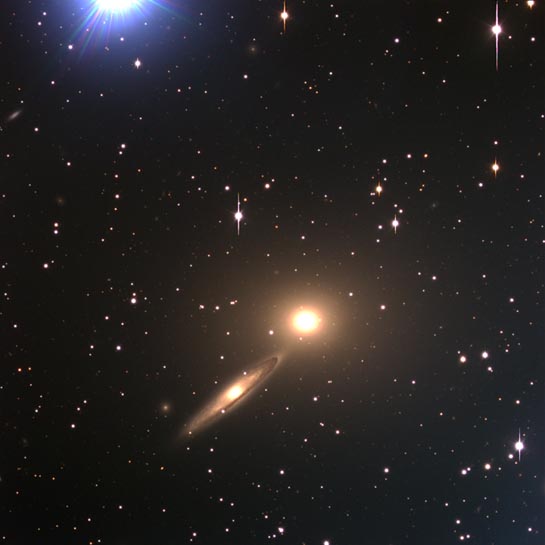
Interacting Galaxies
RA 13h 21m 18.62s Dec -43° 43' 23.98"
Centaurus
150 million light years
5090: 12.6, 5091: 13.9
5090 2.9 × 2.4 arcmin, 5091: 1.8 × 0.5 arcmin
6.81 x 6.78 arcminutes
North is 0.1° right of vertical
ESO
April 30, 1999
ABOUT THIS IMAGE:
A pair of galaxies NGC 5090 - 5091 in Centaurus is shown in this image. They are located at about the same distance as ESO 269-57 and may belong to the same cluster of galaxies.
NGC 5090 (top right) is an elliptical galaxy while NGC 5091(lower left) is a spiral galaxy.
This is an interacting elliptical-spiral system with some evidence of tidal disruption of NGC 5091 by NGC 5090. The velocity of the nucleus of NGC 5091 has been measured as 3429 km/sec, while NGC 5090 has a velocity of 3185 km/sec. NGC 5090 is associated with a strong, double radio source (PKS 1318-43).
This three-color composite (BVR) was obtained with VLT ANTU and FORS1 in the morning of March 29, 1999. A bright star in the Milky Way, just outside the field at the upper left, has produced a pattern of blue straylight. The field size is 6.8 x 6.8 arcmin. North is up and East is to the left.